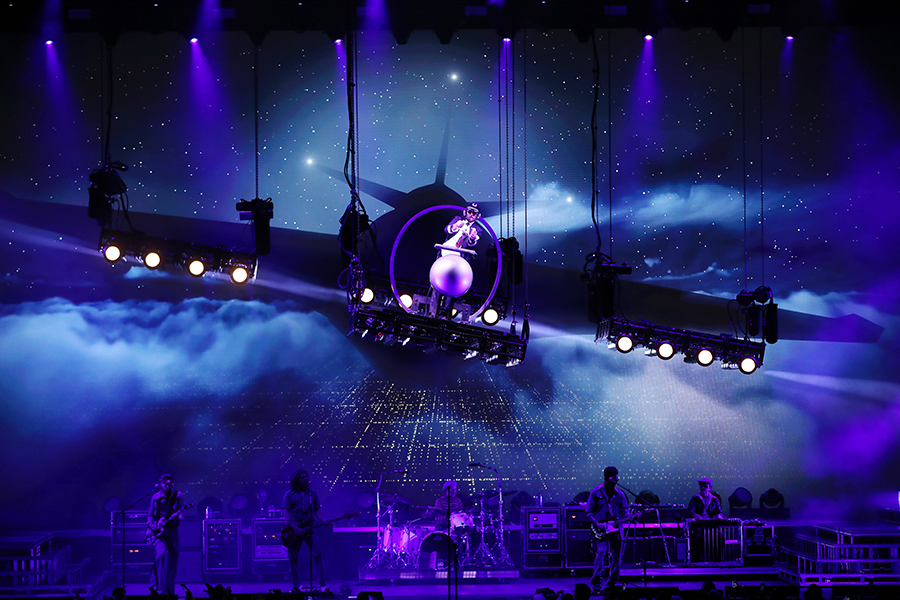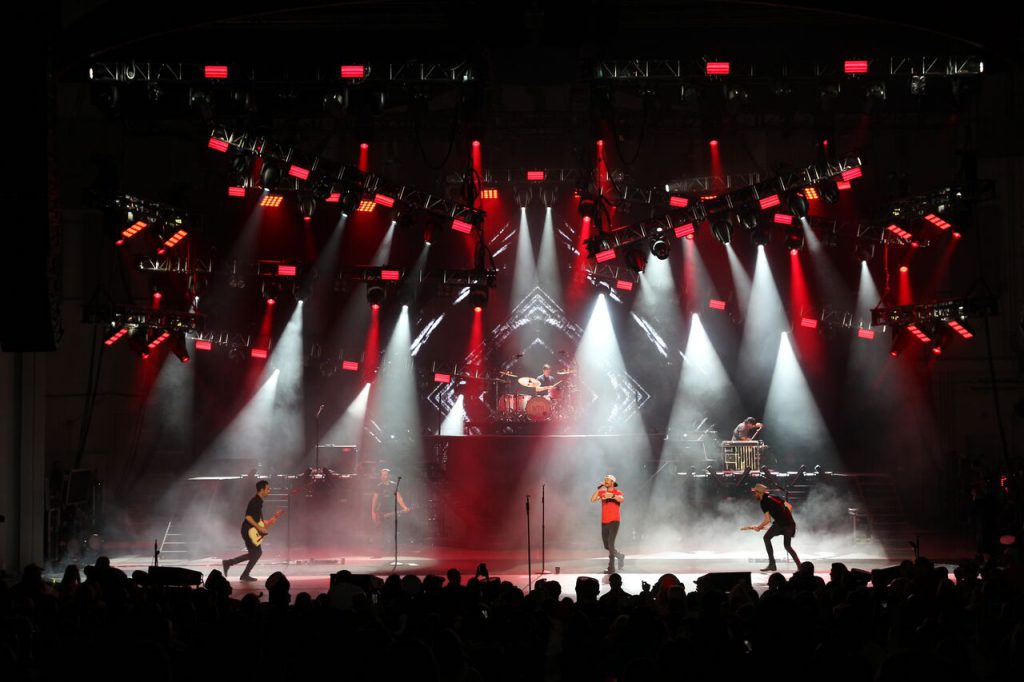Bruce Rodgers and Chris Reade: Balancing Scenic and Light
Posted on September 4, 2018
Photo: Todd Kaplan
Like two chemical elements, scenic and lighting design exert a powerful pull on one another. As each draws the other closer, it upends the status quo for both, forcing them to move in new directions together. It is out of this creative cauldron that a more complete and balanced design emerges.
Among the best at melding these two powerful visual forces are Scenic Designer Bruce Rodgers of Tribe, Inc. and Lighting Designer Chris Reade of Kyva Design. Their collaboration has resulted in some memorable stage presentations, like the airplane that appeared in country superstar Dierks Bentley’s 2018 Mountain High Tour.
In Rodgers and Reade’s hands, scenic and lighting design elements appear to fit naturally together. But like all seemingly effortless creations, their beautifully balanced designs are the result of careful planning, hard work and ongoing collaboration. We caught up with the duo to ask them about how they create the right chemistry between scenic and lighting design.
Your work on the Dierks Bentley Live Concert attracted a lot of attention – and praise! – this summer. Can you describe the design process?
Bruce Rodgers: “Our approach to design a Dierks Bentley show has evolved over the last decade, but the goals remain the same: the audience’s music connection comes first. This is supported by a cutting-edge production that solidifies that special connection. Achieving those goals requires a close and collaborative team, and Dierks’ team is second to none in this respect. Ultimately, our goal is to achieve a perfect mix of lighting, video and scenery, along with a stellar audio experience for Dierks’ audience. Our second goal is to always evolve the Dierks Bentley music experience going forward to entertain his fans.”
In Mountain High Tour, the plane tied directly into the song “Drunk on the Plane.” Does the scenic element have to be literally connected to the music, or can it just be suggestive of a theme?
BR: “That’s a great question. This song is unique, and while we’ll never be able to fly an actual plane onstage, we like finding theatrical ways to fly Dierks for this song. The other 90% of our show is pretty suggestive without being too on the nose.”
Chris Reade: “Outside of the plane element, I don’t think there needs to be literal translation used regularly. We use video throughout the show to suggest a feeling or vibe, more than a literal translation, and it works quite well.”

Photo: Todd Kaplan
What do you look at when you start the process of creating a scenic element? The artist’s music, his or her style, the type of venue?
BR: “All of the above; add to that the scale, budget, truck count, artist input, the production manager’s involvement, the manager, the tour manager, the stage manager, lighting designer, audio designer, and content designers. A lot of different pieces have to come together. Every show, every artist requires a custom process.”
Do you decide on your scenic design before you decide on lighting?
BR: “Chris and I work well together so that scenic and lighting work is interwoven. In the early stage of the design, we generate thumbnail sketches during our creative discussions, and the sketches evoke the lighting look that Dierks and Chris are going for. We use the sketches to talk through the beats of the show as we fold in our content design team, show fx, etc. Chris also generates his Previz images early on, and they are sometimes blended into our main sketches to fill the details better.”
CR: “I think it’s important to have the scenic design ideas and the lighting architecture ideas blend well together. Of course, there are times when we revisit ideas and adapt as needed, but in the beginning stages I lean heavily on Bruce to know what direction we need to take.”
Do you look for lighting to contribute to the scenic element, the way it did with the landing lights on the Mountain High Tour plane? Or is that just a bonus, and you mostly look for lighting to light the stage and audience while scenic elements do their thing separately?
BR: “It is great when lighting and scenic elements come together as they did with the airplane gag. In that case, the airplane gag was added in later in the process and we developed the concept. Everyone did lots of homework before rehearsals to help make it happen. We worked hard to make it safe, but fun to watch. The guys at All Access and Production Manager Jay Ballinger were helpful to the design of this specific stunt piece as well as the touring set.”
CR: “Absolutely, it’s great when things blend! Blending of the various elements of the show really helps scenic elements come to life, which includes lighting, video and atmosphere.”

Photo: Todd Kaplan
Ideas are great, but it always comes down to execution, so what are the big practical concerns that come into play when making a scenic design work?
BR: “Very true. For me the first concern/challenge is to figure out the design and help process it through the reality phase. Another concern is scale, the truck count, as it is important to design a show that can break down into a few trucks as efficiently as possible.”
CR: “I’d say scaling is the biggest concern for me. Making it all fit is of utmost importance.”
What is the key to a successful collaboration between a lighting designer and a production/scenic designer?
BR: “Be polite, be real, be pro, be able to blend ideas. Chris is a great designer and a gentleman. It’s always a lot of fun working with Chris to take Dierks’ journey onwards and upwards – and we found a great friendship as well.”
CR: “In addition to Bruce’s words I’d say listening is number one for me. It’s also very important to share ideas, even if they are not complete. Many ideas can be stimulated and expanded by just having a dialogue at the beginning. Honesty, persistence and humility. Working with Bruce over the years has been so inspiring to me creatively, and I cherish our friendship along with our working relationship.”
Does having a prominent scenic design change the way you use lighting? Does it make any type of fixture more or less important? Does it lead to you using fewer lights?
CR: “Yes and no. It always depends on what the scenic elements consist of. In the case of Dierks’ airplane, it definitely does. To sell the plane visuals, I use a much darker color palette than I normally would for the first half of the song. The plane is flying at night, so being over the top with brightness would be a mistake. Once the plane lands, the color palette expands, and the lighting looks become much larger overall.”
Scenic elements have become more prominent on tours. Why do you think that is?
BR: “It’s a cycle. If you look back 30 years and study the subtle changes along the design spectrum, you’ll find a repeating pattern where concert productions are more lighting centric, less scenic. As has always been the case, designers from all walks of life and genres influence designs all across the spectrum. Lighting and LED technology is racing forward advancing our industry along the way. Lighting drives the emotion. The scenic part is more about identity and special design, and layering, storytelling with space, forms and functions — always with the lighting potential in mind.”

Photo: Todd Kaplan